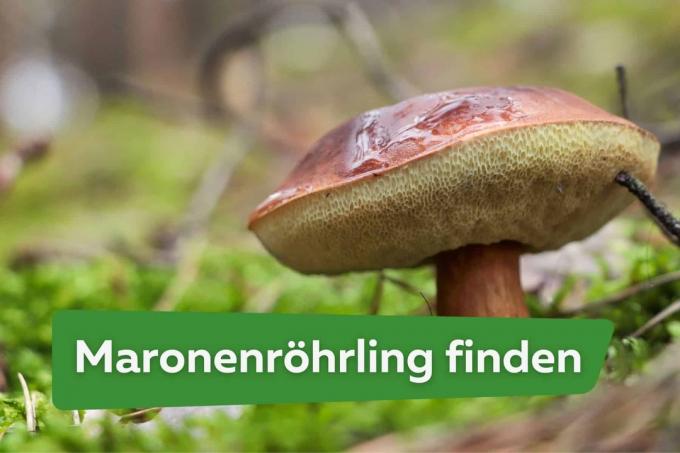
The chestnut boletus is one of the most popular edible mushrooms in autumn. It occurs in the forests of Central Europe. In order to search for it specifically, it is important to know the preferred locations.
To the point
- The typical identifying feature is the brownish wet hat
- prefers coniferous forests
- in the company of spruce or larch trees
- Can be found from September to late autumn
- predominantly native to Central Europe
Table of contents
- Look
- distribution
- Location
- Collection time
- frequently asked Questions
Look
The chestnut boletus (Imleria badia) owes its name to both its taste and its appearance, as the cap is similar in color the chestnuts. The brown color is also the reason for the further name brown cap.

Characteristics:
- Cap: 3 – 15 cm diameter, dark or light brown, smooth, surface moist to greasy
- Stalk: 5 – 12 cm long, brownish to yellow-brown, light grain, often curved
- Tubes: yellowish or greenish-yellow, bluish discoloration when pressed
- Meat: white, occasionally light yellow
The chestnut boletus has a pleasantly nutty taste, which makes it a popular edible mushroom. Occasionally it can be slightly sour, which is often the case with older specimens.
The term “Brown Cap” is also used for the commercially available cultivated Träuschling (Stropharia rugosoannulata). The cultured Träuschling can also be grown in the garden on straw or wood chips.
distribution
The chestnut boletus is widespread in Central Europe. It occurs both on the coasts and in the Alps.

It is particularly common in countries with cool, but not too cold, autumn:
- Germany
- Austria
- Czech Republic
- Poland
- Slovenia
The chestnut boletus becomes rarer the warmer or cooler the climate becomes.
Location
Like many other mushroom species, the chestnut boletus forms a mycorrhizal connection with other plants. It therefore makes sense to prefer to look for conifers near which the fungus often occurs.
The chestnut boletus prefers the following trees:
- Spruces
- larches

In countries where this tree species is not commonly found, it can also grow in the company of other conifers such as pines. The chestnut boletus does not occur in deciduous forests because the soil there is usually not acidic enough. It can only be found in mixed forests, but only if there is a significant population of conifers there.
Collection time
The chestnut boletus is a typical autumn mushroom. His Collection time starts in September and continues into late autumn. If the summer is rather cool and humid, you can do so at the end of July or beginning of August on the search after the tasty edible mushrooms.
In the transitional season there is a risk of confusion with other mushrooms. Visually similar, for example, is the net-stemmed witch's boletus (Suillellus luridus), which is often found in late summer, but is considered to be only partially edible or inedible.
frequently asked Questions
Visually similar and also found in the same locations are, for example, the gall bolete (Tylopilus felleus). Sand boletus (Suillus variegatus), the goat's lip (Xerocomus subtomentosus) or the red-footed boletus (Xerocomellus chrysenterone). The only problem is confusion with the gall bolete, as it tastes unpleasantly bitter.
As with any type of mushroom, only younger specimens should be eaten. Older mushrooms can produce toxins or are infected by other types of fungi such as mold, which are not directly visible. Therefore, you should only eat young chestnut mushrooms. If the color of the sponge on the chestnut boletus tends to be greenish, then the mushroom is usually too old to be eaten.
The chestnut boletus is not a protected species of mushroom. The regional mushroom regulations therefore apply to collecting, which, for example, generally limits the collection period for mushrooms. wherever can be found, how much per person and day can be collected.



